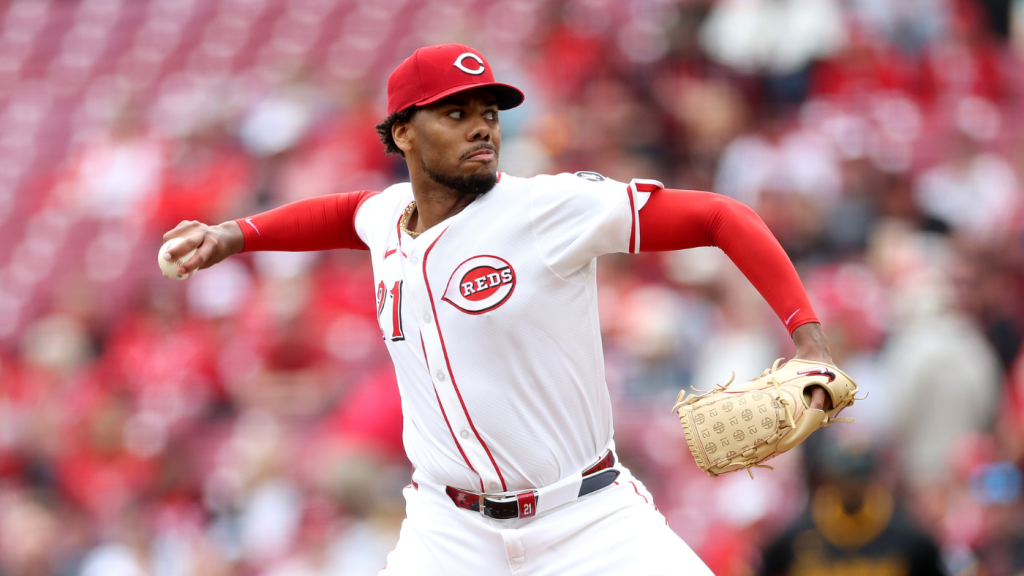Through four starts, Greene looks like one of the best pitchers in baseball this year

It’s too early to fret about All-Star Game probables, Cy Young Award ballots, or any of those other honorific designations that are best left for later in the summer. Even so, Cincinnati Reds right-hander Hunter Greene’s phenomenal start to the season is doing well to remind people that Paul Skenes isn’t the National League Central’s only resident hard-throwing sensation.
Greene, 25, has kicked off his fourth big-league campaign in dominant fashion. When he takes the mound on Saturday against the Baltimore Orioles, he’ll do so without having allowed a run in either of his last two starts. Accordingly, he’ll take the mound with a 0.98 ERA in his first 27 ⅔ innings pitched. All the while, he’s recorded 31 strikeouts versus just four bases on balls.
Put simply, Greene has performed as well as any pitcher in the majors. Just what’s behind his leveling up? A lot of it can be credited to his signature fastball.
Indeed,when you think about Greene, you undoubtedly picture his blistering four-seam fastball. Believe it or not, he’s managed to make his heater even hotter in 2025. To date, he’s averaging 99.4 mph on his four-seamer — that’s a 1.8 mph jump from last season and, should it hold over the duration of the year, it would represent a new career-high from someone known for octane.
Greene’s fastball has been enhanced by some adjustments he’s made to his delivery. If you compare a clip from last season with one from his last time out, you’ll notice that he’s now standing closer to the first-base side of the rubber. It’s harder to notice how he’s getting further down the mound, improving his extension to a career-best 6.61 feet from the rubber to release. That matters because it allows his pitches to play even faster than they would otherwise. In turn, his four-seamer’s effective velocity is now an even 100 mph, as opposed to 97.9 mph last season.
Starting in 2024, Greene made some alterations to his fastball that removed the pitch’s “dead zone” properties. (A dead zone fastball is one that features a similar amount of vertical and horizontal break, making it easier for batters to track visually.) Greene’s fastball has reliably averaged around 16 inches of induced vertical break throughout his big-league career, yet last season marked the first time he averaged fewer than 11 inches of horizontal break. A few inches of movement here or there seems to have made a big difference based on his results.
Lest anyone accuse Greene of not knowing what butters his bread, he’s bucking the leaguewide anti-fastball trend by embracing his heater. His 60.8% usage rate would, again, represent a personal high and the second highest among qualified starters (behind Minnesota’s Joe Ryan). So far, it’s working out just fine. Greene has surrendered a .183 average and .300 slugging percentage on his fastball while generating whiffs on 24.1% of the swings taken against it.
This isn’t to suggest the rest of Greene’s arsenal is without any development. The splitter he started to chuck in 2023 has increased in usage and effectiveness compared to past years. There’s clear evolution, too, with respect to improved velocity (up nearly a mile per hour year to year) and about two inches of additional depth. Greene has, for his career, been better against lefties than righties; his splitter’s gains have made him even tougher for lefties to handle.
Patch it all together, and Greene does appear to be a legitimately improved version of himself. He’s not going to maintain these marks all year long — who could? — but the early season dominance may prove to be be the head end of an outstanding season rather than a tease that goes unfulfilled.











